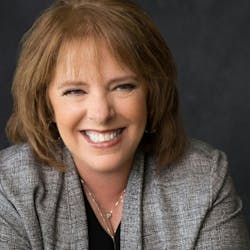Clearfield charts long-term growth as the industry cadence becomes normalized
Clearfield is confident that the industry glut that plagued it and its fellow telecom industry vendors in previous quarters is in the rear-view mirror.
Speaking to investors during its third-quarter fiscal 2025 earnings call, Cheri Beranek, CEO of Clearfield, said that the telecom buying freeze enables it to focus on opportunities to develop new product lines that reflect its customers' needs.
"We are especially pleased with the Clearfield segment's performance as we focus on our objective of growing faster than the industry and driving market share gains," she said. "Despite macro and BEAD-related uncertainty, the company is poised for continued long-term growth as the industry returns to a normalized cadence."
Three-pillar vision
As the telecom and broadband industry continues to change, Clearfield has set what it calls a three-pillar long-term vision.
Its first pillar is to protect its core customers. Today, Clearfield serves nearly 1,000 broadband providers, which include small independent telcos and larger providers. Beranek said, "We will strive to protect these core customers by ensuring that their product needs for today and tomorrow are met."
With its second pillar, Clearfield will leverage its market position to pursue other opportunities with customers that want to leverage their fiber infrastructure, such as wireless backhaul and data centers.
"We have a customer that is a significant broadband provider in the Northwest that is currently using our solutions for wireless backhaul," Beranek said. "We have another customer in the Midwest that has deployed our products in its data centers, and we are seeing our cabinets extend non-hardened electronics to edge networks. These areas aren't new to Clearfield, but we believe they will be a significantly higher percentage of revenue as our customers adapt their business models."
For its third pillar, Clearfield is set on targeting select markets that will enable it to expand its customer base. Driven by the Clearview Cassette, the modular nature of its products will allow it to take existing products to new customers as well as design new products for applications in emerging markets. One example of this is its recently announced TetherSmart MFT, which not only serves Clearfield's existing customer base, but also targets customers in the wireless provider markets.
"This strategy is how we will expand from enabling a lifestyle of better broadband to our expanded purpose of enabling better broadband and beyond," Beranek said. "The goal of this three-pillar approach is to drive revenue growth as well as operational excellence, thereby enhancing long-term shareholder value."
What is making Clearfield confident about its chances in broadband is recent industry research reports about fiber-based broadband that point to how more consumers are opting for the service if it is available in markets where cable is present. A new Fiber Broadband Association Fiber Deployment survey with RVA Market Research & Consulting (RVA) revealed that fiber broadband deployments reached a new annual record of 10.3 million U.S. homes passed in 2024.
The 2024 survey data suggests that fiber now passes 56.5% of U.S. households. Fiber take rates increased slightly in 2024, growing to an average of over 45% based on unique passings. Service providers are achieving their first 20% take rate much faster and reaching higher take rates over time.
"The industry's fundamentals remain strong," Beranek said. "Industry analysts anticipate that the annual number of homes connected will outpace homes passed."
Navigating BEAD uncertainty
Being a supplier to a wide range of service providers, including smaller providers that serve rural areas, Clearfield is not immune to the pressures related to the new changes to the Broadband Equity, Access, and Deployment (BEAD) program.
Clearfield is seeing smaller service providers put their build-out plans on hold.
"The small carriers are the ones who have been the most impacted by the level of uncertainty associated with BEAD," Beranek said. "You've got small carriers who are not able to jockey lots of different builds. We're definitely seeing some carriers who would have been building, expecting to have received BEAD funding for fiscal year 2025, not building at all because they didn't have their engine, but because they didn't have those other areas engineered and designed for deployment."
However, Beranek added that the BEAD uncertainty "doesn't mean that we're going to lose that revenue," but "that revenue has been delayed because of the uncertainty associated with the mess that has been created in the BEAD program."
Outside of BEAD, Clearfield is set on growing its presence with large regional providers and cable MSOs. "We have been very clear that our goal is to grow as fast as the industry or faster to be able to take share. And we're in a position where we see that happening, in all our territory -- in the large regionals and in the MSOs with significant growth year-over-year."
She added that in "Community Broadband, we're going to see Community Broadband providers not putting all of their eggs in one basket and not being entirely dependent upon BEAD's financing."
Excess inventory recovery drives growth
Like other telecom vendors, Clearfield is also benefiting from what appears to be the end of the equipment glut in service providers, with an increase in earnings. During its third quarter earnings period, Clearfield reported net sales of $49.9 million, up 2% over the same period in the prior year and toward the top end of our guidance range. With the Clearfield segment, net sales are up 15% year-over-year.
Gross margin also improved. Driven by continued improvements in overhead absorption, recoveries of previously reserved excess inventory, as well as optimized capacity for current and growing product lines at our North American facilities, gross margin for the period improved from 21.9% to 30.5%.
Daniel Herzog, CFO of Clearfield, said that it continues to improve product costs while also managing the cost structure of its Nestor segment. "Despite lower revenue, driven by a redirected focus among broadband service providers toward operating rather than building out networks in some targeted countries in Europe, we saw a modest year-over-year improvement in gross profit margin for the Nestor segment in the third quarter," he said.
With sales bookings continuing to outpace shipments through the third quarter, lead times decreasing with deployments continuing healthily, Clearfield is increasing its fiscal 2025 outlook for net sales in the range of $180 million to $184 million.
For its fourth fiscal quarter of 2025, Clearfield anticipates net sales in the range of $47 million to $51 million and net income per share in the range of $0.03 to $0.11.
"The net income per share range is based on the number of shares outstanding at the end of the third quarter and does not reflect potential share repurchases completed in the fourth quarter," Herzog said. "Our guidance reflects the evolving tariff situation currently in place, which we do not believe will materially affect our operating results."
For related articles, visit the Business Topic Center.
For more information on high-speed transmission systems and suppliers, visit the Lightwave Buyer’s Guide.
To stay abreast of fiber network deployments, subscribe to Lightwave’s Service Providers and Datacom/Data Center newsletters.
About the Author
Sean Buckley
Sean is responsible for establishing and executing the editorial strategy of Lightwave across its website, email newsletters, events, and other information products.



